Mounting a Wind Generator Mast
How I built a 20-foot mast for my wind generator

Introduction
When pursuing the use of alternate energy sources, two that are usually available to most people are solar or wind. Unless you are an urbanite with no access to the sky or live somewhere where such things are restricted you can usually find at least a limited use of either wind or sun. In a previous tutorial I showed how to build a two-axis solar array that would track the sun and provide a KW of electrical energy. In this one I will show how to mount a small (1 KW) wind generator using a guy wire stabilized mast.
Parts and Tools
To do the same mount that I did you will need the following parts and tools
Parts:
- 1 KW wind generator with mounting hardware and controller
- 50-foot welding leads
- 2 – 10-foot sections of schedule 80 1-1/2 inch steel pipe.
- 2 smooth merchant connectors for 1-1/2-inch steel pipe
- 1 - 1 foot 1 inch steel nipple
- 2 merchant connectors for 1 inch steel pipe
- 1 mounting adapter for small wind generators
- 1 base plate mount for 1-1/2-inch mast
- 6–80-pound bags of pre-mixed strong cement
- 5-5-foot sections of ½ inch rebar
- 4-2-foot sections of 1x6 inch (6 inch true size) boards
- 4 ½ inch by 6-inch steel concrete anchors with nuts and washers
- 2-1/2 by 4-inch bolts with nuts and washers
- Rebar or fence wire
Tools needed:
- Pipe Vise for 1-1/2-inch pipe
- Pipe threader for 1-1/2-inch pipe
- Large drill
- ½ inch high-speed carbide drill bit
- Pipe wrench for 1-1/2-inch pipe
- Metal grade epoxy
- Metal working furnace or acetylene torch
- Metal saw or some means to cut rebar
- Mounted workbench or post vise
- Large level
- Rubber mallet
- Shovel
- Wheel barrow
- Post hole digger and/ or tractor with 8-inch diameter auger
- Hoe
Preparing the Mast
One thing to remember, when you are buying pipe, the size refers to the inside diameter not the outside diameter. For example, 1-1/2-inch pipe is 1-1/2 inch inside diameter and just a shade off of 2 inches outer diameter. You always order fittings, adapters and other items based on inside diameter. If you can get one 20 foot section of 1-1/2 inch pipe do so, it will save you lots of work. However, it was costly to get it delivered to my site so I had them cut it into 2 – 10 foot sections I could fit into my truck easily. Of course, to get the full 20 foot height I wanted, I then had to join the two sections back into a single 20 foot piece.
Also, if you do have it cut, see if they can thread the ends for you. My welding supply couldn’t do it and local gas and plumbing folks only worked with 1 inch pipes so I used Ebay and FaceBook Merchant to find a pipe vise and a threading tool for less than $70 total. I also bought a machine bench from Harbor Freight on which to mount the pipe vise.
The connectors used to join two lengths of pipe in a straight line are called merchant connectors. If your local hardware or plumbing supply doesn’t have them look at Granger.

Figure 1: A merchant connector, they can also be smooth.
The wind generator will come with a mounting flange on the bottom and provide a mounting plate for you to weld on to the mast to mate with it. I found an adapter that allows you to mount the generator mounting flange to the mast without welding a plate on, it was from Cutting Edge Power, but beware, there may be a several week lead time. It may be easier to take the mounting plate and a high strength merchant connector and have them welded together.
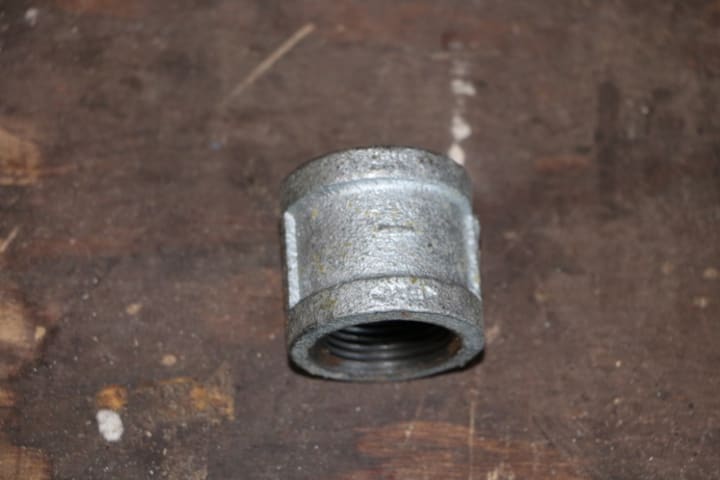
Figure 2: The Adapter Provided by Cutting Edge Power
One of the reasons I mention the specification of piping diameter was because when I ordered the adapter, I assumed it would be sized for the outer diameter of the pipe it fit over so I asked for a 2-inch diameter adapter. Well, they sent me one sized for a 2 inch inner diameter pipe which means the inner diameter of the adapter is about 2-1/2 inches…I’ll show my fix for that later.
Procedures:
Joining the mast sections:
Assuming you have two 10-foot sections of 1-1/2 inch pipe, you will need to join them.
1. To join the pipes using a merchant connector, the ends of the pipes will need to be threaded. To thread the pipe ends:
a. Mount the end of the pipe to be threaded so that a foot or so sticks out of the vise
b. Support the other end of the pipe, I found it easier to thread if you also tied it down. I used a ratchet strap and my deck railing.

Figure 3: Mounting the pipe
2. Once the pipe is firmly mounted so it can't move or rotate, make sure the threader is set to 1-1/2 inch pipe and, using oil, read the pipe for about 2 to 3 inches in length. Be careful the threading cuts are sharp and can easily penetrate the soles of shoes, feet and hands. The threader is a large ratchet it is much easier to use your weight to push it down and ratchet than any other combination.
3. Repeat step two for the second pipe
4. Flip the second pipe around and repeat step 2 on the other end.
5. You should end up with two pipes, one with one end threaded, the other with both ends threaded.
The joint Stiffener
Merchant couplers are not designed to provide sideways strength, merely to fasted pipes together and allow for a water or gas tight seal. I am not worried about the sheer forces when the mast is standing straight up supported by guy wires, but in the process of standing the mast up I would hate for it to bend or break at the merchant connector. Thus, the need for a joint stiffener.
There are several ways to stiffen the joint, welding the connector, welding rebar or other stiffeners to the outside of the joint or providing an inner stiffener to the joint itself. I felt the most strength would be gained from an internal stiffener.
First, I hoped that a 1-inch ID pipe would translate into a 1-1/2 inch OD, but instead it translated into a 1.23 inch OD pipe. So, I purchased the merchant connectors for the 1 inch pipe, unfortunately there were no smooth merchant connectors so I had to purchase ones similar to Figure 1 and grind them to fit just inside the 1-1/2 inch diameter mast pipes.
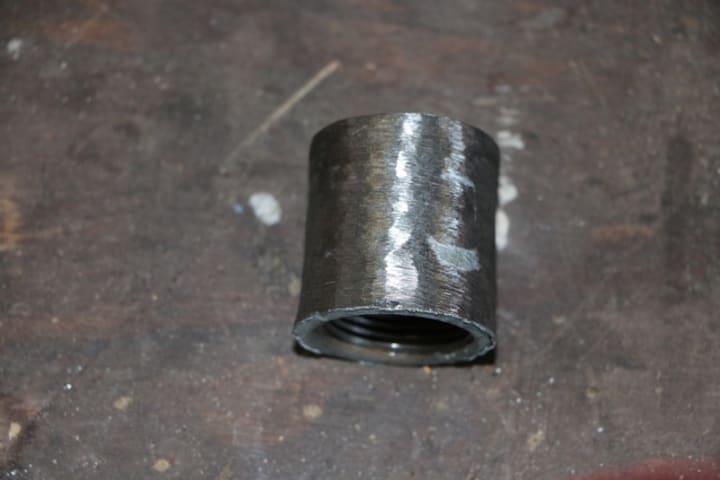
Figure 4: Ground to fit merchant connector.
The connectors where then affixed to the 1 foot long 1 inch pipe nipple and inserted into the 1-1/2-inch pipe.
Before jointing the pipes I threaded the 50 foot welding leads through the two pipe sections and through the joint stiffener. Also coat the exposed 1 inch pipe with a liberal coating of the metal epoxy then slide the pipes together making sure 6 inches of the stiffener is in each side. Once the epoxy cures the joint will be the strongest section of the mast.
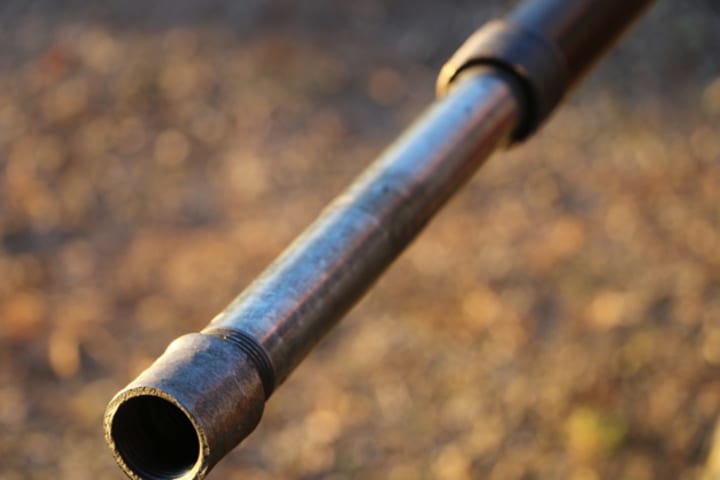
Figure 5: How the stiffener fits in the mast sections
The mast mounting plate.
What inspired my mast mounting plate was the scene in the move Captain America where Steve outsmarts the other recruits by pulling the supporting pin out of the flagpole mount and it pivots on the pivot pin bringing the flag down to the ground allowing him to ride back with the pretty girl in the jeep while the others hike back to base. I searched the net for a similar mount for a large flag pole but only found pale imitations. So, I drew up a quick drawing on Doodle on my iPad and sought out a welder to make one.
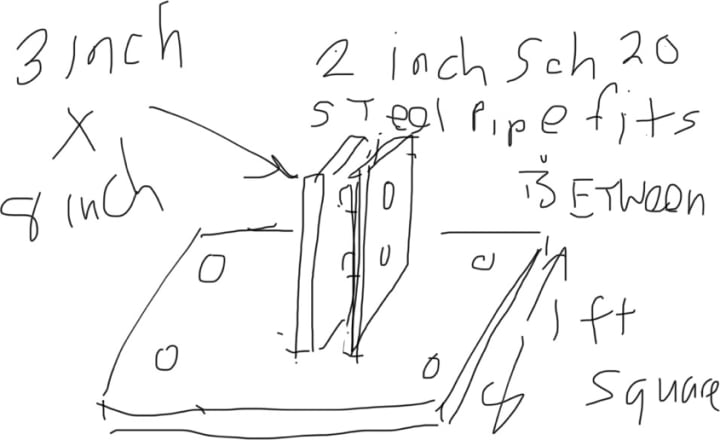
Figure 6: My crude drawing of the mast mount
No doubt soliciting quite a few laughs, I also found someone willing to make it, they provided what you see in Figure 7.

Figure 7: As built Mount
The as built is great, except they put the holes that tie the mount to the platform in such as a way that the anchor ends will interfere with the rotation of the mast. I had them at the corners to not interfere. They also didn’t make sure the pivot pin and securing bolt les lined up between the plates.
So, if your Google foo is better than mine, maybe you can find a pre-made one, if not show a local welder this, or have him watch Captain America.
Mounting pad and Footer
Figure 8 shows my initial mounting concepts. Initially I thought that just a 2x2-6-inch-thick concrete pad would be enough to support the mast, but was later convinced to add a footer under the pad, of course this meant having rebar reinforcement to prevent the base and footer from separating over time.

Figure 8: Initial mounting concept drawing
Figure 9 shows the modified base plus footer. I decided the footer would be three feet deep and 8 inches in diameter, the limits of my tractor PTO auger. I also ditched the PVC liner as it isn’t needed.

Figure 9: Revised pad and footer
Preparing the Mounting Base
1. Using the 4-2-foot 1x6 inch boards, make the concrete form. Make sure the edges are square, I used 2 inch deck screws to fasten the boards together.

Figure 10: Concrete Form
2. Clear the 2 by 2-foot area where the pad will be located and use a shovel and level to level the form on all four sides.

Figure 11: Concrete form leveled.
3. Using the post hole digger or, the auger, bore the footer hole in the center of the pad form. My auger would only do about 2-1/2 feet, so I had to finish out the footer manually with a post hole digger. Make sure the footer hole is as square with the pad as possible.

Figure 12: PTO Auger attachment and augured footer hole
4. If your rebar is new and already cut in 5 foot lengths, great! I had some old stuff laying around, unfortunately someone had bent it into a pretzel, so I cut it into the right lengths and then used my forge to straighten it. Using either a forge or an oxyacetylene torch to heat the rebar to red, carefully bend the rebar so that you have a two inch section that is at right angles to the rest on one end, a three foot straight section and then the remainder bent at the same direction as the two inch section at a 90 degree angle from the straight section.

Figure 13: Properly bent rebar
5. Using the rebar wire or fence wire, wire the rebar together to form the tie between the pad and footer, like Figure 14.

Figure 14: Wired together rebar tie between pad and footer
6. If you haven’t already done so, clear the dirt from boring the footer hole out of the concrete form and make sure it is still level, make sure it has a uniform 6-inch depth.
7. Place the small end of the rebar tie into the hole, add or remove dirt as needed from the footer hole to allow the longer legs of the tie to be at the three-inch level inside the form, they need to be in the center of the lad thickness to be most effective. You may need to trim them to fit just inside the corners of the form.

Figure 15: Placement of the rebar tie
8. Using the wheelbarrow and hoe mix two bags of concrete at a time and fill the footer hole and pad form, use a two foot long, straight board to level the concrete inside the form, there will be a little excess, just scrape it off the side. Be sure the concrete surface is level.
9. Before the concrete sets, insert the concrete anchors through the mounting holes in the mount with the threads up, put on the washers and nuts until, they are three threads from the bottom on all four anchors.
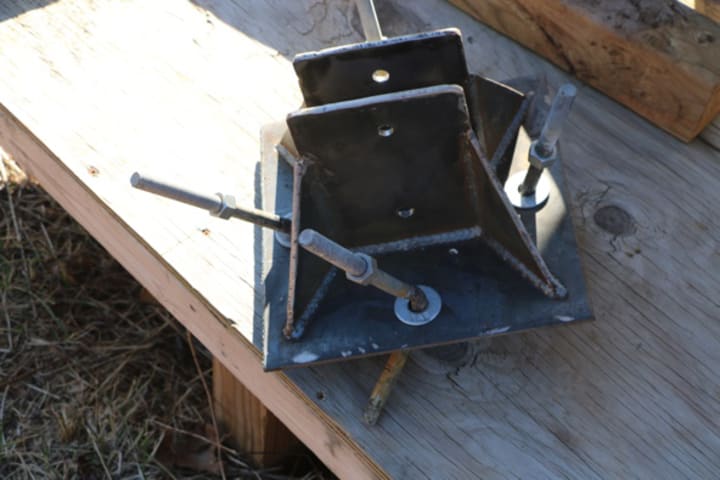
Figure 16: Concrete anchor bolts inserted into mount.
10. At the center of the pad, carefully shove the anchor bolts into wet cement, until the base of the mount is resting on the wet concrete, you may have to use the rubber mallet to set them properly, be sure the anchor ends are pointing away from center. Use the level to be sure the mount is level. The anchor bolt’s nuts should be flush against the surface of the mount base plate when the anchors are properly in place.

Figure 17: Mount installed on pad.
11. Allow the concrete to cure as per manufacturer’s specifications
12. Place the guy wire anchors as shown in Figure 18. I used shed anchors screwed into the ground about 3 feet.

Figure 18: Guy wire Anchor placement
13. For my 20-foot mast with the guy wires attached at 17 feet elevation I ran the anchors out to 17 feet. Note the placement of the anchors in relation to the alignment of the base.
Raising the mast
Once the pad and footer are dry tighten the bolts on the mounting platform, then you are ready to raise the mast.
1. Place the end of the mast section with two drill holes in the mount and insert one of the mounting bolts to act as a axis.

Figure 18: Lower mast section in mount, note I cut one of the anchor ends off to allow it to rotate.
2. Put the merchant connector on the threads on the other end and tighten with a pipe-wrench
3. Insert the joint stiffener into the threaded end of the mast section you just mounted.

Figure19: Merchant connector installed
4. Move the second mast section so the end to be joined to as close as possible to the end of the mast section mounted.
5. Thread the wires for the generator through the section you just moved and then into the lower section, pull through both sections until there is about six inches left at the other end of the second mast section. I used a heavy-duty extension cord with the plugs removed, it provides aa convenient three wire all together cable.
6. Install the cable keeper in the top mast section and knot the wires to keep them from slipping through it. A cable keeper is a small cup or metal piece that is sized to need to be forced into the pipe, it holds the cable, so no weight is on the connection.

7. Mix the epoxy as per manufacturer's instructions and smear a thick coat on the stiffener, then push it halfway into the lower mast section. Slide the upper mast section on making sure half the stiffener is inserted into the top section. I did this by placing a set of vise locking pliers on at the halfway point.
8. Use a pipe wrench to tighten the top mast section into the merchant connector, be sure to tighten to spot torque (Until you see spots.)

Figure 20: Mast sections joined and spot torqued.
9. Allow the epoxy to cure, may take up to 24 hours.
10. Place the guy wire bracket in place and tighten the locking screws. You can do this while the epoxy is curing. Mount it at the 17-foot point on the mast. Align the guy wire attachment points to the positions of the guy wire anchors.

Figure 21: Guy wire collar in place and tightened.
11. Call me insecure but I went ahead and manufactured a brace to fit below the guy wire collar to make sure it stayed in place.

Figure 22: Collar brace to install beneath the guy wire collar
12. If the adapter is on the end of the mast, go ahead and remove it.
13. Mount the adapter to the mounting plate on the wind generator and make sure the leads are pulled through the center hole before you tighten the mounting bolts.

Figure 23: The adapter in place with wires pulled through
14. Take the generator assembly over to the end of the mast. Carefully support the generator assembly while you use solder and then wire nuts to connect the generator output to the cable.

Figure 24: Wiring up the generator
15. Carefully position the connections inside the adapter while you connect the adapter by screwing it back on the end of the mast, tighten with a pipe wrench again to spot torque.
16. Attach the generator blades as per manufacturer's instructions and attach the nose cone.

Figure 25: Attach the blades to the hub, mount and tighten the hub, snap on nose cone
17. At the battery bank, attach the other end of the cable to the inverter and batteries.
18. Prepare 3–26-foot lengths of guy wire.
19. Attach the guy wires to the guy wire collar
20. Using the Pythagorean formula, with a 17-foot right triangle the hypotenuse will be slightly longer than 24 feet. For the guy wire that is going to be parallel to the mast, attach it to the appropriate anchor at 24.5 feet in length, the extra 6 inches will allow the mast to lean slightly forward while you attach and adjust the other two guy wires.
21. Carefully lift the mast until it is resting slightly forward, supported by the attached guy wire. Attach the other two guy wires and adjust their length to 24 feet.
22. Tighten the first guy wire to bring the mast straight, use a level. You may need to adjust the other wires depending how level your lot is.

Figure 26: Mast is raised and straight.
23. Insert the second bolt in the base and spot torque both.
Summary
Well, if you have made it this far I hope you know have a safely mounted wind generator. Of course, the mast could useful for other things as well. Good luck in all your future projects!
A word to the wise - A couple months after I installed this I decided to put on larger blades, so I lowered the mast, that went fine. When I raised the mast I got it vertical, then a wind came up while I was attempting to put in the second bolt. The mast fell, you can't get enough leverge from the foundation end to counter over a hundred pounds of mast and generator if it starts to fall, pinning my leg under the weight of the mast and generator against the concrete pad.

This necessitated an emergency room visit and I was lucky a ladder caught the mast and reduced the pinch angle, or I might be without one leg. Always have a spotter and hook the guy wires before fastening the second foundation bolt.
About the Creator
MICHAEL ROSS AULT
I began writing at age 13. Short stories, novellas, poetry, and essays. I did journals while at sea on submarines. I wrote technical books for a decade before I went back to fiction. I love writing, photography, wood working, blacksmithing






Comments
There are no comments for this story
Be the first to respond and start the conversation.